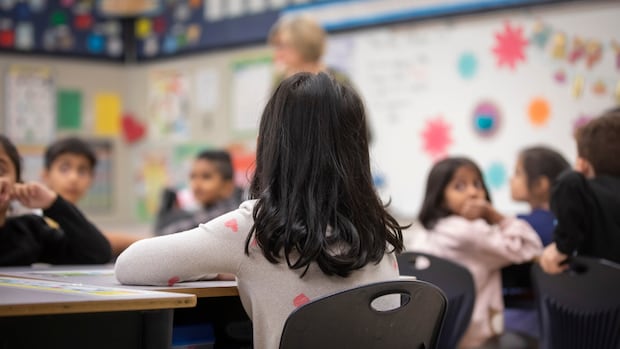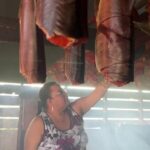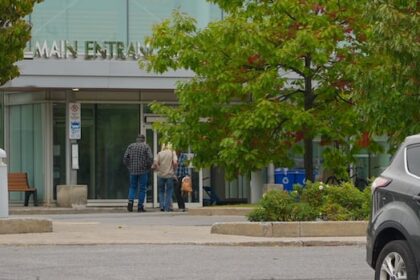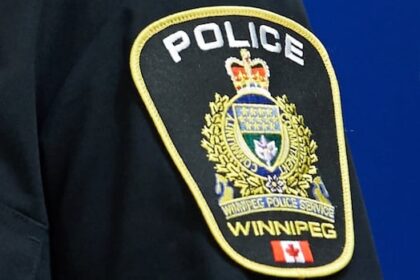As kids head back to class in B.C., many educators are having to make do with less after school districts across the province made hefty budget cuts in the spring.While the province touts its record investments into public education, school trustees and parents say the system is at a “crunch point.””There isn’t any more wiggle room at the board level…. The whole model needs to change,” said Bonnie McBride, chair of the district parent advisory council for the Kamloops-Thompson School District 73.Earlier this year, the school district cut almost $5.8 million from its budget, including 74.6 full-time equivalent positions in teaching staff, support staff, principal, vice principal and exempt staffing, as well as supplies and more. Other school districts across the province are in the same boat, such as New Westminster, Nicola-Similkameen, Maple Ridge, Qualicum, Vancouver Island North, Vernon and Mission.B.C.’s biggest school district, Surrey, saw a $16-million shortfall. In April, the local teachers’ association warned of schoolwide paper shortages, forcing students to share worksheets or use scrap paper to copy worksheets.Burnaby cut $4.2 million, including money for elementary band class, counselling, custodial services and international student assistants. WATCH | School districts across B.C. face budget shortfalls: Some B.C. school districts making major cuts in struggle to balance budgetsAs B.C. school districts present their budgets for the coming year, numerous of them are struggling to cover their regular costs. The Surrey Board of Education has made headlines with its anticipated $16-million shortfall, but as The Early Edition story producer Caroline Chan shows us, it’s not the only one facing a deficit.McBride’s family has already seen the effects of the cuts: her daughter was part of a hybrid program that included regular classes with additional learning supports, but it’s now been shut down.”We have continually eaten away at some of those inclusive education programs across the province,” McBride said.The Kamloops-Thompson School District told CBC that provincial funding does not include increases to accommodate inflation, portables, relief costs or the “rising costs of increasingly complex classrooms.”McBride said schools have been tasked with providing an increasing number of front-line services, including mental health supports, food security initiatives and developmental therapies, but that the funding hasn’t kept up.”There needs to be an immediate influx of funding to fix this coming year,” McBride said.Province touts record investmentThe province, meanwhile, points to its “record investments in the K-12 system year over year.””This school year [2025-26] is estimated to be the ministry’s highest funding for districts ever,” the Ministry of Education said in an emailed statement.It said districts are now receiving more than $13,600, on average, in per student funding.”This is the highest ever.”But the B.C. School Trustees’ Association (BCSTA) has noted public school districts are receiving less of the total provincial budget than two decades ago.In the 2001-02 budget, public school districts received 15.49 per cent of the provincial budget, while this year they received only 7.97 per cent of it, according to the BCSTA’s 2026 budget submission to the province.Tracy Loffler, president of BCSTA, an umbrella organization made up of B.C.’s 60 public boards of education, said it’s a complex problem involving increased inflationary costs, increased benefit costs and inadequate capital funding.”Districts from every corner of the province are experiencing some very significant budget challenges in ways that we haven’t seen for years,” said Loffler, who is also a Mission School District trustee.”While we acknowledge and appreciate the increased investments in public education, it’s simply just not enough.”LISTEN | How B.C. teachers are preparing for the new school year: The Early EditionB.C. teachers reflect on the new school yearFrom cell phone bans to navigating the world of AI, we hear from three teachers in B.C. about their strategies for navigating the new school year.By law, school boards must pass balanced budgets, or trustees risk being fired by the province.”We have very little control over the revenues that we get, and so we have to control our budgets through funding,” Loffler said, noting about 80 per cent of a school district’s funding goes to wages and salaries.”These kinds of cuts and difficult decisions literally keep us awake at night.”Capital funding affects operations budgetsSome parents have grown weary of hearing about increasing funding when costs are growing faster.Laura Kwong, district parent advisory council chair in New Westminster, said she wants an acknowledgement that funding is not meeting student needs.”Unfortunately, the messaging that we hear over and over again is that [the province has] never spent more, it’s record funding amounts,” she said. “But the cost of delivering education is also going up, and that is where the gap is,” she added.Educational assistants, librarian assistants and elementary band programs are just some of the staffing and programming cuts made this year by B.C. school boards. (Ben Nelms/CBC)The New West school district saw a shortfall of $2.3 million this year. It cut 20 full-time equivalent (FTE) education assistants and one FTE noon-hour supervisor. The school district told CBC government grants haven’t increased enough to keep pace with rising costs, and that there haven’t been funding increases to account for inflation.The rapidly growing student population also means the district needs to use part of its operating budget to fund portables to deal with overcrowding. (Surrey is well-known for the same issue.)Kwong said the money spent on portables, which can cost a “couple million dollars every year,” could otherwise fund teacher salaries or utility costs.Per-student enrolment formulaThe ministry currently funds school districts primarily based on the number of kids that need education programs and services, known as an enrolment-based model.The funding isn’t based on individual district spending or costs.”This supports consistency in how all districts throughout B.C. are funded and empowers each district to use this funding as effectively as possible to best support their students,” the province said in a statement.But McBride said the amount of money the school district gets per student isn’t enough.She pointed to a funding model review panel appointed by the Ministry of Education in 2018. The panel said the last time B.C.’s public education funding formula was substantially revised was in 2002, when declining student enrolment was projected.The panel’s first recommendation was to change the funding model to allocate money for specific needs first, including targeted funding for Indigenous students and inclusive education.McBride said none of the recommended changes have been enacted.Loffler said any funding model will have its pros and cons.”I’m not sure that there’s one specific solution,” she said.She advocated for increased funding in general and warned that without it the province could “continue to see an erosion of services for students and difficult working conditions for staff.””Bottom line … we need increased funding for public education.”
B.C. schools at funding ‘crunch point’ as districts cut millions from budgets











